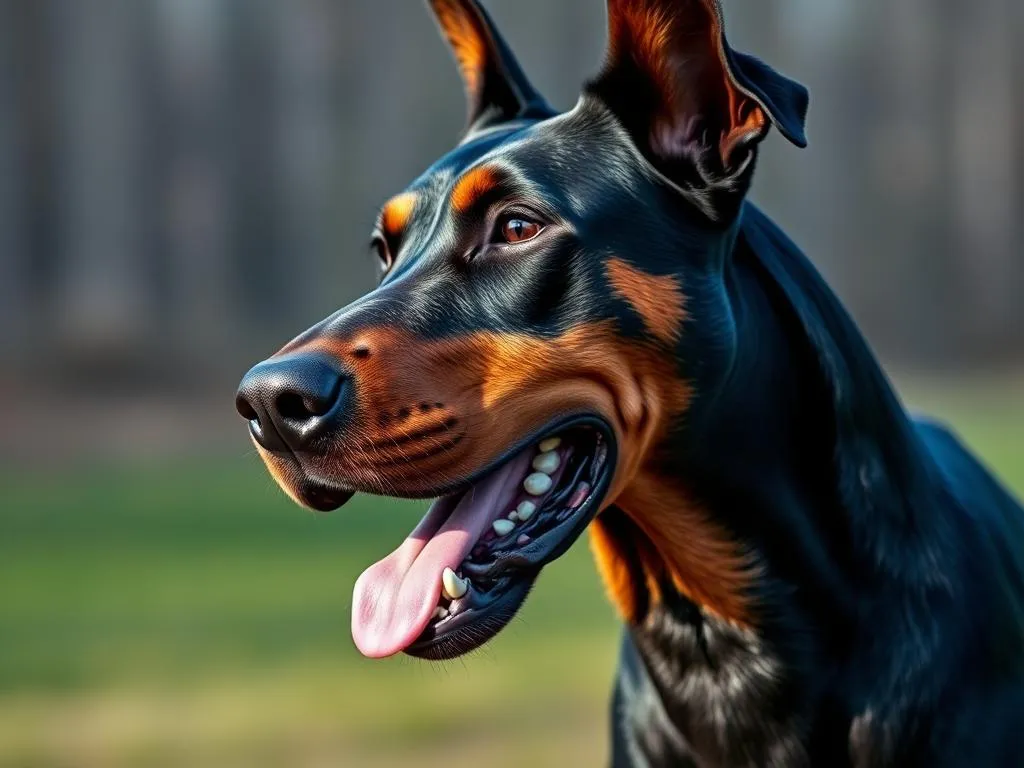
Introduction
Dog breeds exhibit a wide array of behaviors and characteristics, making the study of aggression in dogs particularly fascinating and important for potential dog owners. Understanding dog behavior can significantly impact the relationship between humans and their canine companions. Among various breeds, the Doberman has garnered a reputation for being aggressive, raising questions about whether this perception is justified when compared to other dog breeds. This article aims to delve deeply into the topic of are Dobermans more aggressive than other dogs, analyzing their behavior and comparing it with other breeds.
Understanding Dog Aggression
Definition of Aggression in Dogs
Aggression in dogs is a complex behavior that can manifest in various forms. It is generally defined as any behavior that is intended to cause harm or assert dominance over another individual. Different types of aggression include:
- Territorial Aggression: This occurs when a dog feels the need to protect its territory from intruders.
- Fear-based Aggression: Dogs may become aggressive when they feel threatened or scared.
- Protective Aggression: This is often seen in dogs that are instinctively wired to protect their owners or their family.
Understanding these distinctions is crucial, as they can help dog owners interpret their pet’s behavior more accurately.
Factors Influencing Aggression
The level of aggression in dogs can be influenced by various factors, including:
- Genetics and Breed Tendencies: Some breeds are predisposed to aggressive behavior due to their genetic makeup.
- Environment and Upbringing: A dog’s environment during its formative years can impact its behavior. For example, dogs raised in a hostile environment may exhibit aggressive traits.
- Training and Socialization: Well-trained and socialized dogs are less likely to exhibit aggressive behavior. The way a dog is trained can significantly influence its temperament.
- Health Issues: Physical health can also play a role. Pain or illness may lead a dog to behave aggressively as a form of self-defense.
Overview of the Doberman Breed
History and Origin
The Doberman breed originated in Germany in the late 19th century, developed by a tax collector named Karl Friedrich Louis Dobermann. He bred these dogs for protection during his rounds, aiming for a breed that was loyal, intelligent, and strong. The original purpose of Dobermans was to serve as guard dogs, police dogs, and even military dogs due to their alert nature and protective instincts.
Physical Characteristics
Dobermans are known for their sleek, muscular build, with an average height of 24 to 28 inches and a weight ranging from 60 to 100 pounds. Their short, smooth coat is often black and tan, but other colors such as blue and fawn also exist. The breed’s appearance is both elegant and intimidating, contributing to its reputation as a formidable guard dog.
Temperament
Dobermans are recognized for their intelligence, loyalty, and protective nature. They typically form strong bonds with their families and are known to be affectionate towards their owners. When comparing Dobermans to other breeds, their temperament can be seen as a blend of protectiveness combined with a desire to please, making them versatile companions and working dogs.
Comparing Aggression Levels
Dobermans vs. Other Common Breeds
When examining whether Dobermans are more aggressive than other dogs, it is essential to consider aggression levels in other popular breeds, such as Bulldogs, German Shepherds, and Pit Bulls. Studies have shown that aggression can vary widely even within a breed, influenced by the factors mentioned earlier.
- Bulldogs are generally known for their calm demeanor and are often less aggressive compared to Dobermans.
- German Shepherds are protective and can exhibit aggressive behavior if not properly socialized and trained.
- Pit Bulls have a reputation for aggression, but much of this perception is rooted in media portrayal rather than statistical evidence.
Comparative studies have indicated that while Dobermans can exhibit protective behaviors, they are not inherently more aggressive than these other breeds. Factors such as training and socialization play a significant role in determining a dog’s aggression levels.
Misconceptions About Doberman Aggression
Many myths surround the Doberman breed, often portraying them as inherently aggressive. This stereotype can stem from their historical roles as guard and police dogs. However, real-life examples demonstrate that Dobermans can be gentle, loving family pets when raised in a positive environment.
For instance, many Doberman owners report their pets as being affectionate and good with children. Such testimonials challenge the prevailing myths about their aggression, showing that the breed’s behavior is more a reflection of upbringing than genetic predisposition.
The Role of Training and Socialization
Importance of Early Training
Early training and socialization are fundamental in shaping a dog’s behavior and can significantly impact aggression levels. Dobermans, in particular, benefit from exposure to various environments, people, and other animals during their formative months. This early socialization helps them develop into well-adjusted adults.
Effective Training Techniques for Dobermans
Positive reinforcement methods are especially effective with Dobermans. Using treats, praise, and playtime to reward good behavior encourages them to repeat those actions. Additionally, enrolling in professional training classes can provide structured guidance for both the dog and the owner.
Owner Responsibility in Managing Aggression
Understanding dog behavior is crucial for responsible ownership. Doberman owners should be aware of their dog’s needs and behavior signs. Consistent training, socialization, and a loving environment can help manage any aggressive tendencies, ensuring a harmonious relationship.
Case Studies and Real-Life Examples
Dobermans as Family Pets
Many families have successfully integrated Dobermans into their homes. These dogs often display a protective yet gentle demeanor around children. Owners frequently share stories of their Dobermans being loyal companions, playing with kids, and participating in family activities.
For instance, a family in California adopted a Doberman who initially showed signs of fear-based aggression due to a rough start in life. Through patient training and socialization, the dog transformed into a well-adjusted family member who was both protective and affectionate.
Aggression Incidents Involving Dobermans
While there have been notable incidents involving Dobermans, it is essential to analyze the context of these situations. Many incidents arise from a lack of proper training or socialization rather than an inherent aggression in the breed itself. For example, a Doberman involved in a biting incident may have been acting out of fear or discomfort rather than aggression.
These instances highlight the critical importance of responsible ownership and training. Understanding triggers for aggression can help prevent incidents and promote a safer environment for both the dog and the community.
Conclusion
In summary, the question are Dobermans more aggressive than other dogs requires a nuanced understanding of dog behavior. While Dobermans can exhibit protective behaviors, they are not inherently more aggressive than other breeds. Factors such as genetics, environment, training, and socialization play a crucial role in determining a dog’s behavior.
The perception of Dobermans as aggressive dogs is often a misconception. With responsible ownership, early training, and proper socialization, Dobermans can thrive as loving family pets. Understanding a breed’s unique characteristics and investing time in training can lead to a fulfilling relationship between dogs and their owners.
FAQs
Are Dobermans more aggressive than other dog breeds?
No, Dobermans are not inherently more aggressive than other breeds. Aggression can vary widely based on training, socialization, and individual temperament.
What are the best training methods for Dobermans?
Positive reinforcement techniques, such as using treats and praise, are effective for training Dobermans. Professional training courses can also be beneficial.
Can aggression in Dobermans be managed?
Yes, aggression in Dobermans can be managed through proper training, socialization, and understanding of dog behavior.
How do Dobermans compare to other breeds in family settings?
Dobermans can be loving and protective family pets, often forming strong bonds with children and adults alike when properly trained and socialized.









